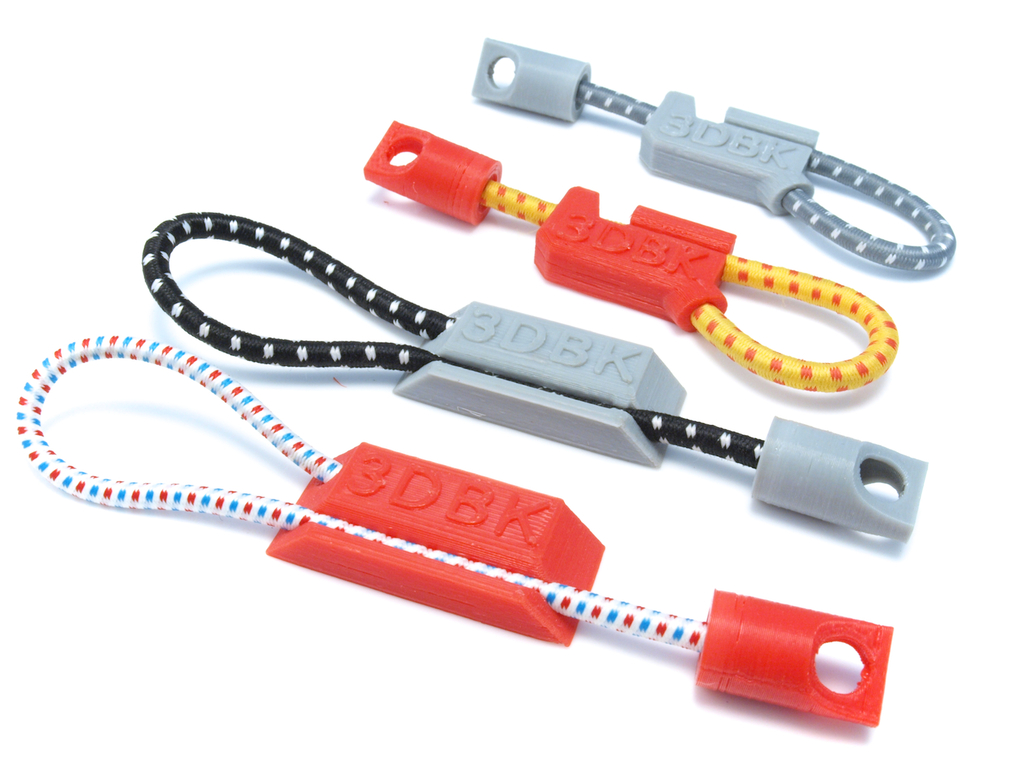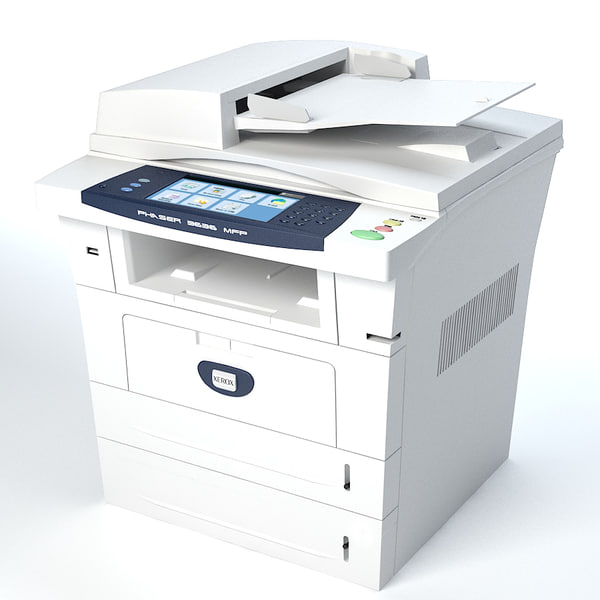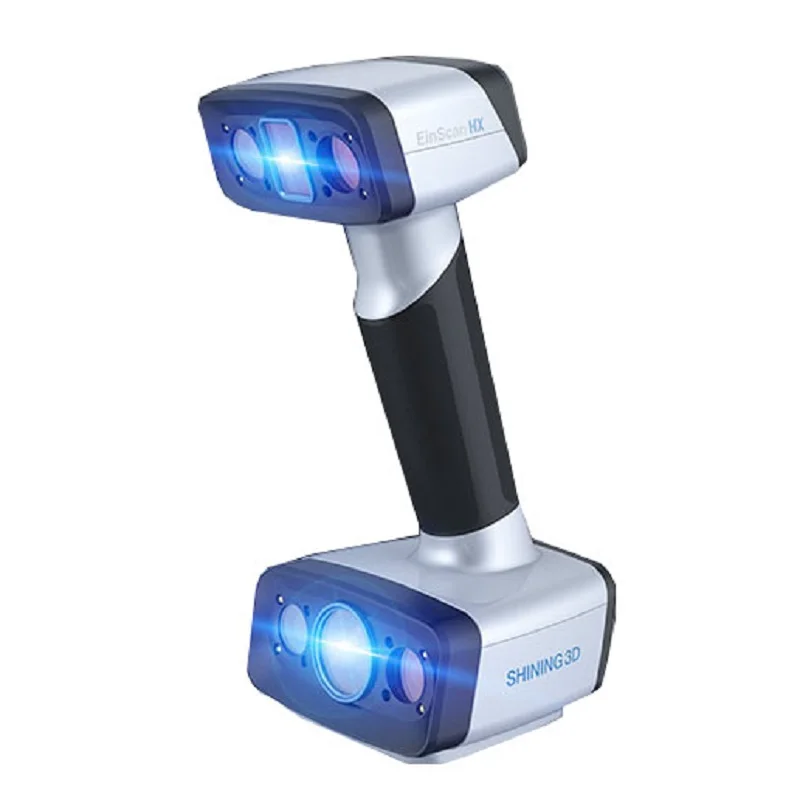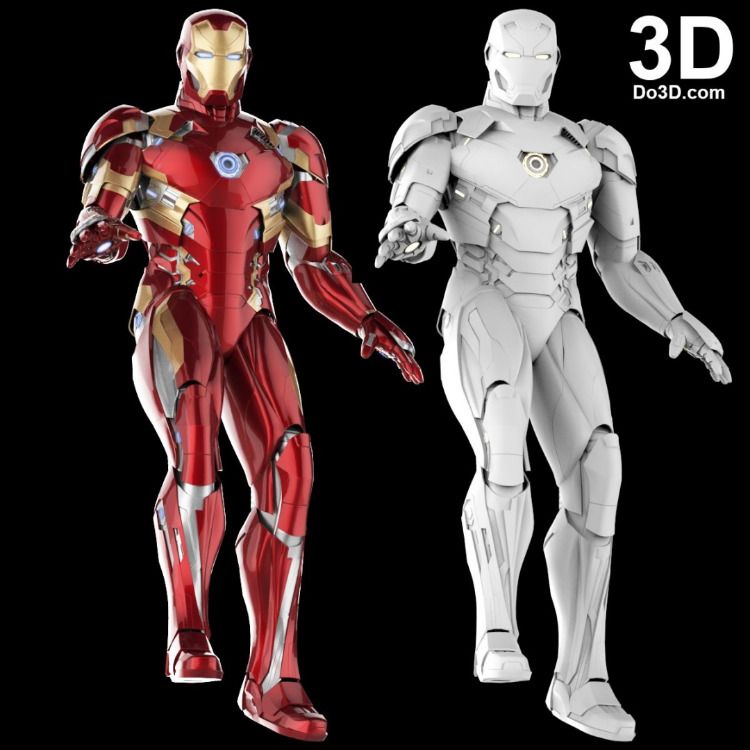First commercial 3d printer
From the 80s to Today
3D Learning Hub
See all categories
Contents:
- Introduction
- The 1980s: Birth of the main 3D Printing Techniques
- The 1990s: Emergence of the Main 3D Printers Manufacturers & CAD tools
- The 2000s: 3D Printing Gains Media Visibility
- The 2010s: Years of Visibility, Innovation and Hopes for 3D Printing
- What about now, and what about the future?
Introduction
3D printing is not as new as you may think! Actually, FDM (Fused Deposition Modeling) technology became quite popular and impressive for the general public around 2009 because of its media coverage. At some point, a lot of people actually thought that FDM was the only additive manufacturing technology. But FDM is not even the first 3D printing technology developed, and 3D printing actually started in the 1980s.
Here is a quick 3D printing timeline from the 1980s to today. The history of 3D printing is fascinating. The first machines, the great expectations, and the many 3D printing applications that are now flourishing. Let’s take a look back at the 3D printing history.
The 1980s: Birth of the main 3D Printing Techniques
The concept of 3D printing has been imagined back in the 1970’s, but the first experiments are dated from 1981. The first 3D printing attempts are granted to Dr Kodama for his development of a rapid prototyping technique. He was the first to describe a layer by layer approach for manufacturing, creating an ancestor for SLA (or Stereolithography): a photosensitive resin was polymerized by an UV light. Unfortunately, he did not file the patent requirement before the deadline.
A few years later, a French team of engineers, Alain Le Méhauté, Olivier de Witte and Jean-Claude André, was interested by the stereolithography but abandoned due to a lack of business perspective. This 3D printing attempt was also using a stereolithography process.
If you want more information about these first experiences, check out our interview of Jean-Claude André. At the same time, Charles Hull was also interested in the technology and submitted a first patent for stereolithography (SLA) in 1986. He founded the 3D Systems Corporation and in 1988, released the SLA-1, their first commercial product.
If SLA was the first 3D printing technology developed, what about SLS (Selective Laser Sintering) and FDM (Fused Deposition Modeling) back then?
In 1988, at the University of Texas, Carl Deckard brought a patent for the SLS technology, another 3D printing technique in which powder grains are fused together locally by a laser.
In the meantime, Scott Crump, a co-founder of Stratasys Inc.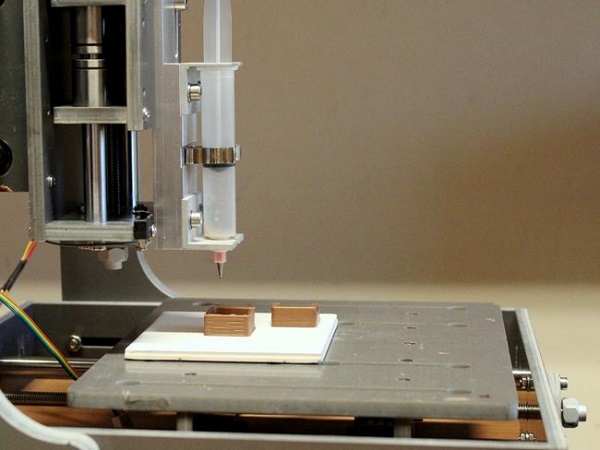 filed a patent for Fused Deposition Modelling (FDM). In less than ten years, the three main technologies of 3D printing were patented and 3D printing was born!
filed a patent for Fused Deposition Modelling (FDM). In less than ten years, the three main technologies of 3D printing were patented and 3D printing was born!
To resume:
1980: First patent by japanese Dr Kodama Rapid prototyping
1984: Stereolithography by French engineers then abandoned
1986: Stereolithography taken up by Charles Hull
1988: First SLA-1 machine
1988: First SLS machine by DTM Inc then buy by 3D system
The SLA 1The 1990s: Emergence of the Main 3D Printers Manufacturers & CAD tools
Now that the basics were established, the evolution of additive manufacturing is pretty fast. The main 3D printers manufacturers are emerging, new technologies are perfected, and 3D modeling tools start to be developed as well, bringing additive manufacturing to the next level.
In Europe, EOS GmbH was founded and created the first EOS “Stereos” system for industrial prototyping and production applications of 3D printing.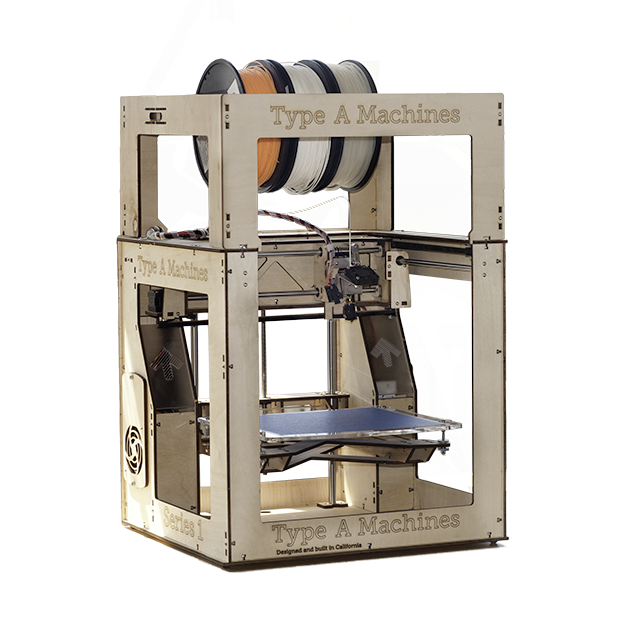 Its industrial quality is today recognized worldwide in SLS technology (Selective Laser Sintering technology) for plastics and metals.
Its industrial quality is today recognized worldwide in SLS technology (Selective Laser Sintering technology) for plastics and metals.
In 1992, the Fused Deposition Modeling patent was issued to Stratasys, which developed many 3D printers for both professionals and individuals. From 1993 to 1999, the main actors of the 3D printing sector emerged with various techniques:
ZCorp and binder jetting: Based on MIT’s inkjet printing technology, they created the Z402, which produced models using starch- and plaster‐based powder materials and a water‐based liquid binder
Arcam MCP technology and Selective Laser Melting.
At the same time, we can see that more and more new CAD tools, allowing to create 3D models, are becoming available and developed, with, for example, the creation of Sanders Prototype (now known as Solidscape), one of the first actors to develop specific tools for additive manufacturing.
Charles Hull was awarded the European Inventor Award in the Non-European countries category, by the European Patent Office Price in 2014.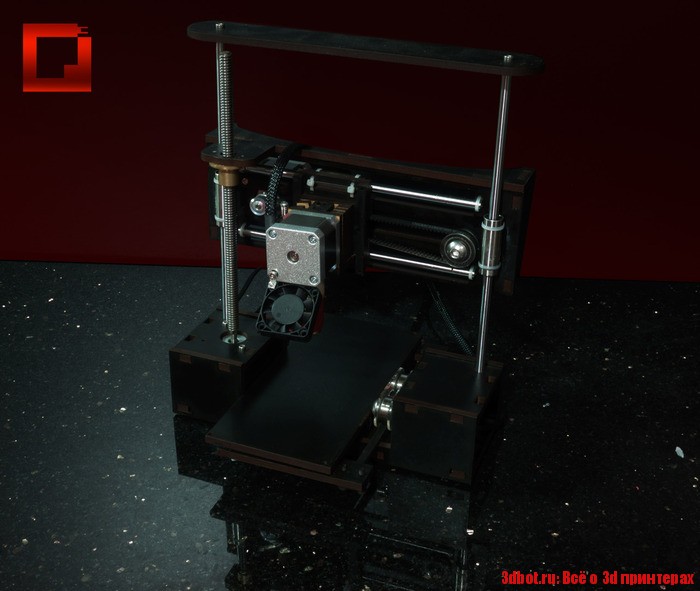
To resume:
1990: First EOS Stereos system
1992: FDM patent to Stratasys
1993: Solidscape was founded
1995: Z Corporation obtained an exclusive license from the MIT
1999: Engineered organs bring new advances to medicine
Charles Hull was awarded the European Inventor Award in the Non-European countries category, by the European Patent Office Price in 2014.The 2000s: 3D Printing Gains Media Visibility
In 2000, the millennium saw the first 3D printed kidney, but we would have to wait 13 more years to see it transplanted into a patient. 3D printed kidneys are now working perfectly and researchers are experimenting on accelerated growth to transplant organs very rapidly.
2004 was the year of the initiating of the RepRap Project which consists of a self-replicating 3D printer. Yes, it is possible to 3D print a 3D printer. This open-source project led to the spreading of the FDM 3D desktop 3D printers, and of the popularity of the technology in the makers community.
In 2005, ZCorp launched the Spectrum Z510, the very first high-definition color 3D printer.
In 2008, 3D printing reached an even greater media presence thanks to another medical application: the first 3D printed prosthetic limb.
This amazing medical 3D printing project incorporated all parts of a biological limb, was printed ‘as is’, without the need for any later assembly. Nowadays, combined with 3D scanning, 3D printed medical prosthesis and orthosis are more and more cheaper and faster to get for the patient. Moreover, these prostheses are more and more optimized and adapted to the morphology of the patient. Additive manufacturing is bringing new opportunities regarding mass-customization.
http://www.ufunk.net/en/tech/exo-prosthetic-leg/2009 was the year in which the FDM patents fell into the public domain, opening the way to a wide wave of innovation in FDM 3D printers, a drop of the desktop 3D printers price, and consequently, since the technology was more accessible, an increased visibility.
2009 was also the year Sculpteo’s online 3D printing service was created, one of the pioneers of the now flourishing online 3D printing services, another step toward 3D printing accessibility!
To resume:
2000: a 3D printed working kidney is created
2000: MCP Technologies (an established vacuum casting OEM) introduced the SLM technology
2005: Z Corp. launched Spectrum Z510. It was the first high-definition color 3D Printer on the market.
2006: An open source project is initiated (Reprap)
2008: The first 3D printed prosthetic leg
2009: FDM patents in the public domain
2009: Sculpteo is created
The 2010s: Years of Visibility, Innovation and Hopes for 3D Printing
The recent years have been very important for 3D Printing. With the FDM patent expiration, the first years of the decade have become the years of 3D printing. Additive manufacturing is then becoming a real and affordable prototyping and production technique for businesses, opening new possibilities
In 2013, President Barack Obama mentioned 3D printing as a major issue for the future in his State of the Union speech, which made “3D printing” an absolute buzzword.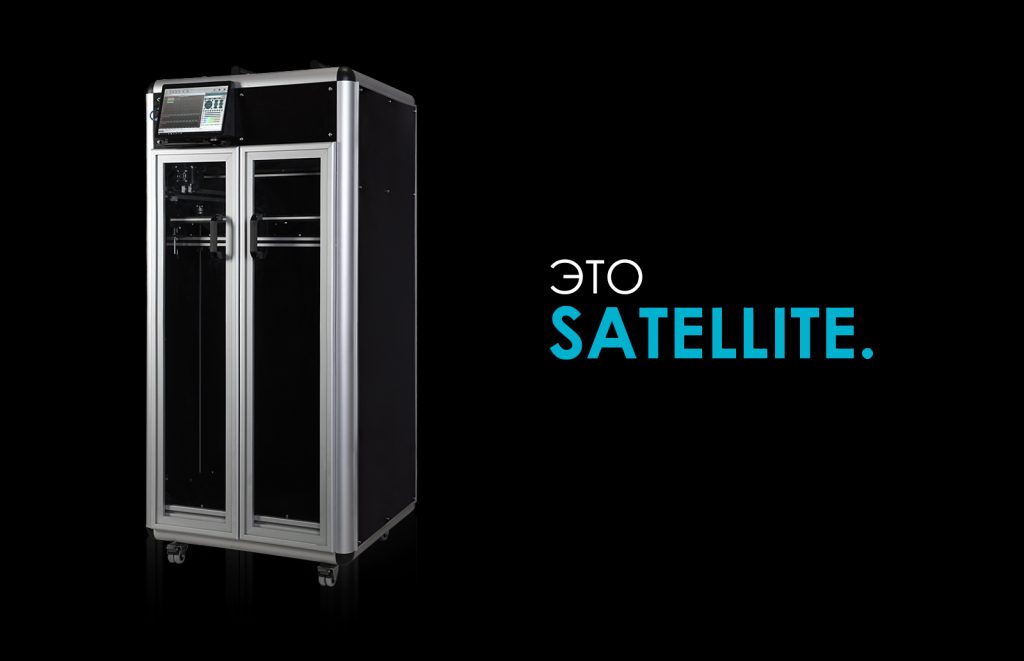
It is now very present in the general public’s mind, and in policy makers’ decisions. The technology is forever progressing, just as are the uses of this technology. More and more small and big companies take advantage of the low prototyping price that 3D printing offers, and have fully integrated it in their iteration, innovation and production processes.
In 2010, Urbee was the first 3D printed car. Its body was fully 3D printed using a very large 3D printer. Now, the 3D printed car is progressively becoming a reality, and additive manufacturing is taking more and more space in the automotive sector. Indeed, from the integration of 3D printing technology for the tooling process, to 3D printed car parts, additive manufacturing appears to be quite helpful on many levels, helping to go through brand new challenges.
credit: EDAG3D printing technology keeps on evolving, and progressing. New 3D printers are being issued regularly, they are more efficient, they print faster, and they give access to new 3D printing materials.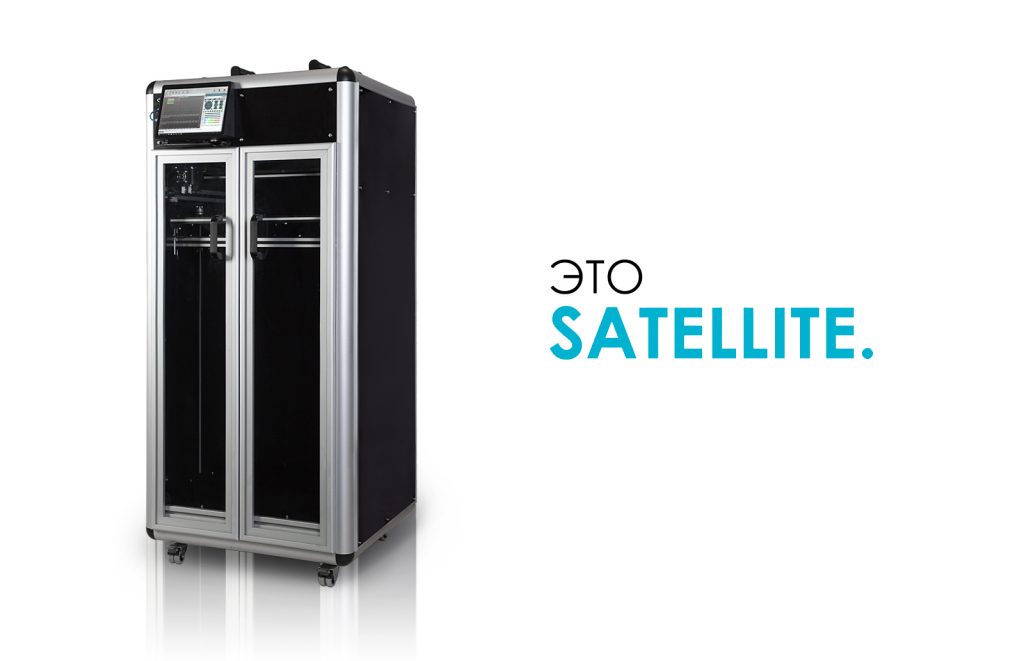 Technologies like CLIP (DLS) are being developed by Carbon, making the printing process even faster and more accurate than ever.
Technologies like CLIP (DLS) are being developed by Carbon, making the printing process even faster and more accurate than ever.
If you check the offers of our online 3D printing service, you will find a wide-range of materials from strong and accurate 3D printed resins such as Rigid Polyurethane, to 3D printed flexible plastic, and heat resistant 3D printed metals: everything is now printable, making it easy for companies to find materials adapted to their needs and products.
New 3D printing materials are being explored every day, from Daniel Kelly’s lab who’s 3D printing bone to the French startup XtreeE, who’s 3D printing concrete to revolutionize the construction industry! Indeed, regarding architecture application, 3D printing concrete is now a real thing, and families are starting to move into 3D printed houses. The first family to move into a 3D printed house actually did in 2018. The house is 1022 square feet, is perfectly habitable and took two days to print.
To resume:
2010: Urbee is the first 3D printed prototype car presented
2011: Cornell University began to build 3D food printer.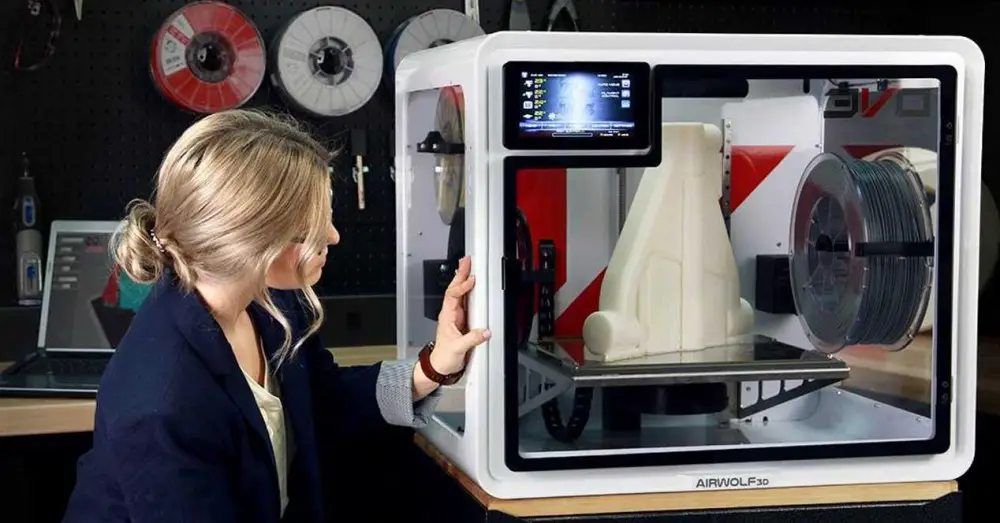
2012: The first prosthetic jaw is printed and implanted
2013: “3D printing” in Obama’s State of the Union speech
2015: Carbon 3D issues their revolutionary ultra-fast CLIP 3D printing machine
2016: Daniel Kelly’s lab announces being able to 3D print bone
2018: The first family moves into a 3D printed house
The 2020s: the arriving of more advanced Additive Manufacturing materials
Additive manufacturing is now offering the possibility to create parts for demanding sectors using advanced materials such as extremely resistant and rigid materials, or professional flexible plastics: we call them high performance materials. It is also a way to implement more sustainable manufacturing using bio-based materials, with a series of Nylon PA11 materials. BASF and Sculpteo are combining their strengths to offer you these high-performance materials and help you go even further in your projects.
Some of these impressive materials are offering thermal resistance, chemical resistance, or even heat resistance for the most demanding applications.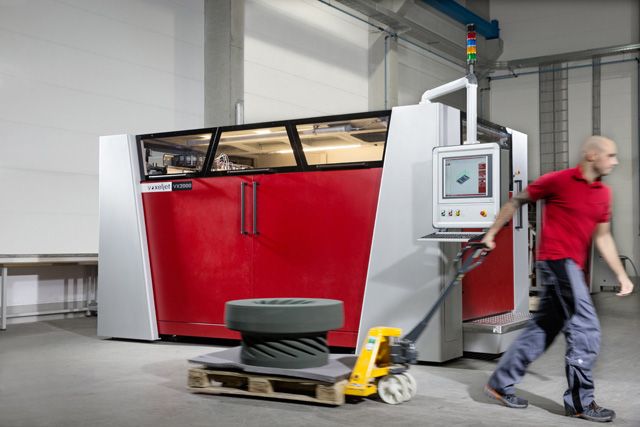
You can try out some interesting materials such as Ultrasint® PA11 ESD and its electrostatic discharging properties, Ultrasint® PA11 CF reinforced with carbon fibers for more rigidity, Ultrasint® PA11 & MJF PA11 bio-based powders with great resistant properties, Ultrasint® PA6 FR a flame-resistant material, Ultrasint® PA6 MF mineral filled for more resistance, Ultrasint® TPU88A & TPU01 for resistance and flexibility
What about the future?
We can see today that 3D printing is revolutionizing big sectors such as automotive, architecture or medical. But where can this technology still improve?
3D Bioprinting is becoming a big subject for the medical field. Indeed, applications of 3D bioprinting could be numerous. You can easily see the diverse advantages of this technology. It could create human tissue for burn victims. It is also a way to create human organs, in order to perform organ transplants. We can see today that there is not enough donors and bioprinting could be an excellent, fast, and life saving solution.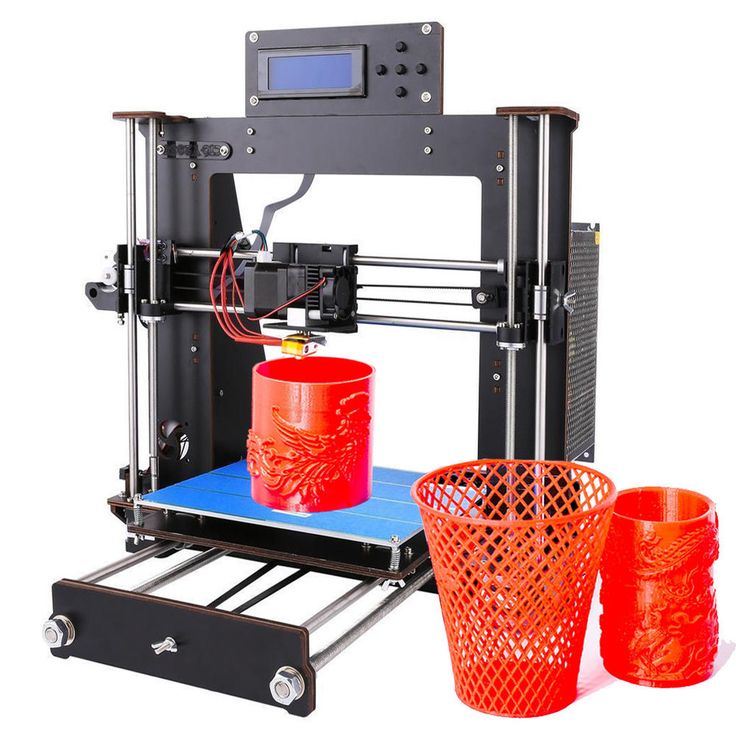 The 3D bioprinting technology could allow to create various tissue structures, such as kidney tissue, skin tissue.
The 3D bioprinting technology could allow to create various tissue structures, such as kidney tissue, skin tissue.
3D printing for architecture is also improving, but could really become bigger in the upcoming years. Projects faster to build, cheaper, and that avoid material waste: the benefits of this technology for the construction sector are numerous.
Additive manufacturing will also have a great role to play in the transition towards more sustainable manufacturing techniques. 3D printing already offers sustainable advantages but still has improvements to make, especially in terms of renewable materials.
3D printing hasn’t reached its limits and many projects and amazing stories are waiting to be written. We already imagine this future in our article on the innovations to come in 3D printing and the top 10 materials 3D printing materials of the future that already exist!
Are you ready to write the future of 3D printing history, and improve your manufacturing process? Start your 3D printing project now. upload your 3D file here and choose among our 3D printing materials catalog to make the most of our 3D printing service.
upload your 3D file here and choose among our 3D printing materials catalog to make the most of our 3D printing service.
Voir aussi:
- Return to Top
Get the latest 3D printing news delivered right to your inbox
Subscribe to our weekly newsletter to hear about the latest 3D printing technologies, applications, materials, and software.
When Was 3D Printing Invented? The History of 3D Printing -
May 15, 2020
When you first heard the words “3D printing” did you imagine a super futuristic technology, like in the movies but, when was it really invented?
While the term 3D printing may sound like something you’d expect to hear in a science fiction novel, the history of 3D printing, also known as additive manufacturing, is longer than you might think.
Keep reading to learn about the history of 3D printing, and our BCN3D predictions on where we see this technology going in the future.
The first documented iterations of 3D printing can be traced back to the early 1980s in Japan. In 1981, Hideo Kodama was trying to find a way to develop a rapid prototyping system. He came up with a layer-by-layer approach for manufacturing, using a photosensitive resin that was polymerized by UV light.
Although Kodama was unable to file the patent requirement of this technology, he is most often credited as being the first inventor of this manufacturing system, which is an early version of the modern SLA machine.
Across the world a few years later, a trio of French researchers was also seeking to create a rapid prototyping machine. Instead of resin, they sought to create a system that cured liquid monomers into solids by using a laser.
Similar to Kodama, they were unable to file a patent for this technology, but they are still credited with coming up with the system.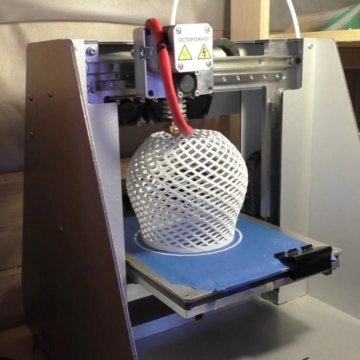
That same year, Charles Hull, filed the first patent for Stereolithography (SLA). An American furniture builder who was frustrated with not being able to easily create small custom parts, Hull developed a system for creating 3D models by curing photosensitive resin layer by layer.
In 1986 he submitted his patent application for the technology, and in 1988 he went on to found the 3D Systems Corporation. The first commercial SLA 3D printer, the SLA-1, was released by his company in 1988.
But SLA wasn’t the only additive manufacturing process being explored during this time.
In 1988, Carl Deckard at the University of Texas filed the patent for Selective Laser Sintering (SLS) technology. This system fused powders, instead of liquid, using a laser.
SLS fabrication machines in the Fundació CIM warehouseFused Deposition Modeling (FDM) was also patented around the same time by Scott Crump. FDM, also called Fused Filament Fabrication, differs from SLS and SLA in that rather than using light, the filament is directly extruded from a heated nozzle.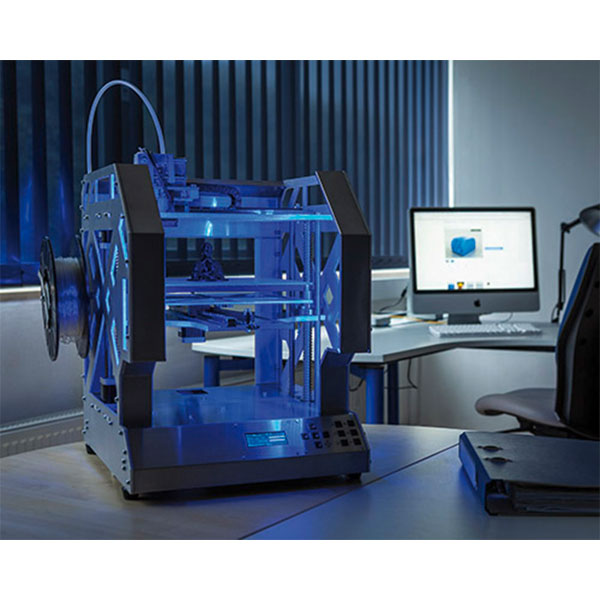 FFF technology has gone on to become the most common form of 3D printing we see today.
FFF technology has gone on to become the most common form of 3D printing we see today.
These three technologies are not the only types of 3D printing methods that exist. But, they are the three that serve as the building blocks that would lay the groundwork for the technology to grow and for the industry to be disrupted.
1990-2010: GrowthIn the 90s, many companies and startups began popping up and experimenting with the different additive manufacturing technologies. In 2006, the first commercially available SLS printer was released, changing the game in terms of creating on-demand manufacturing of industrial parts.
CAD tools also became more available at this time, allowing people to develop 3D models on their computers. This is one of the most important tools in the early stages of creating a 3D print.
During this time, the machines were very different from those that we use now. They were difficult to use, expensive, and many of the final prints required a lot of post-processing.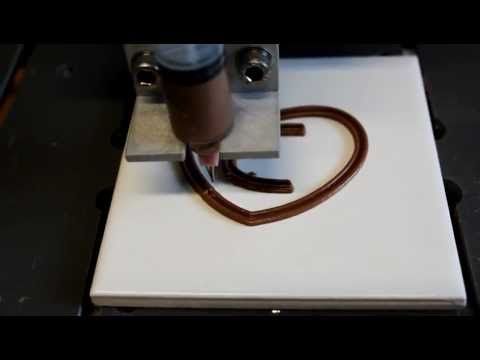 But innovations were happening every day and discoveries, methods, and practices were being refined and invented.
But innovations were happening every day and discoveries, methods, and practices were being refined and invented.
Then, in 2005, Open Source changed the game for 3D printing, giving people more access to this technology. Dr. Adrian Bowyer created the RepRap Project, which was an open-source initiative to create a 3D printer that could build another 3D printer, along with other 3D printed objects.
RepRapBCN in the middle of Fundacio CIM warehouse showing the RepRap Machines to visitors.In 2008, the first prosthetic leg was printed, propelling 3D printing into the spotlight and introducing the term to millions across the globe.
Then, in 2009, the FDM patents filed in the 80s fell into the public domain, altering the history of 3D printing and opening the door for innovation. Because the technology was now more available to new companies and competition, the prices of 3D printers began to decrease and 3D printing became more and more accessible.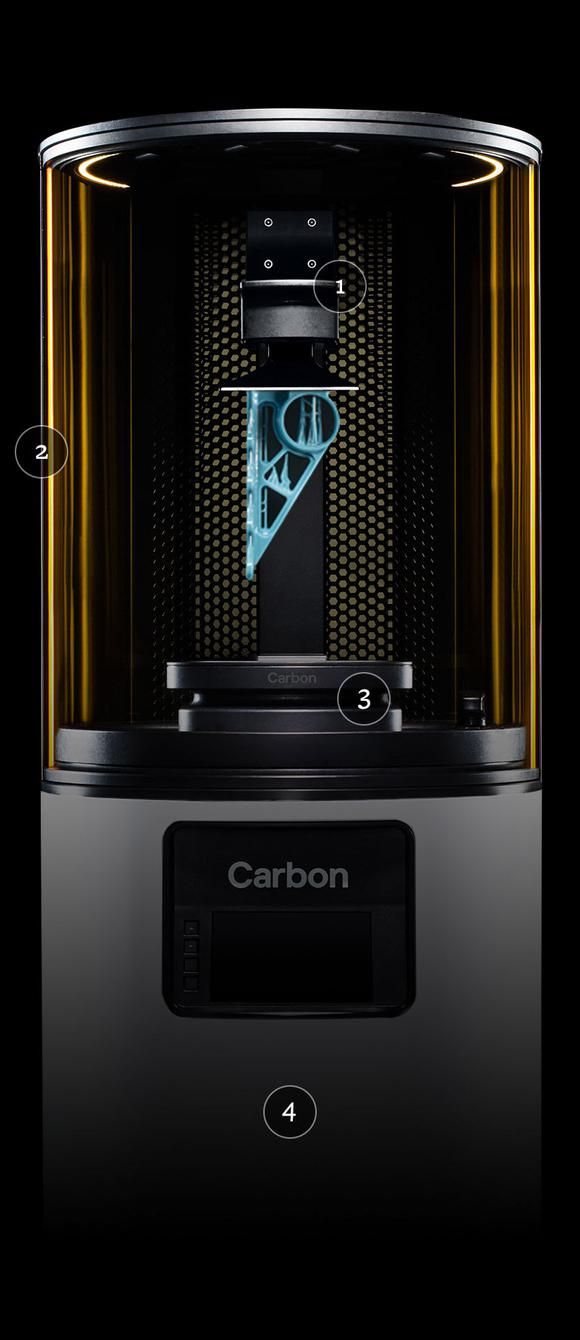
In the 2010s, the prices of 3D printers started to decline, making them available to the general public. Along with the lowering prices, the quality and ease of printing also increased.
The materials that printers use have also evolved. Now there are a variety of plastics and filaments that are widely available. Materials like Carbon Fiber and Glass Fiber can also be 3D printed. Some creatives are even experimenting with printing materials like chocolate or pasta!
In 2019, the world’s largest functional 3D printed building was completed. 3D printing is now consistently used in developing hearing aids and other healthcare applications, and many industries and sectors have adopted the technology into their everyday workflow.
It’s safe to say that the history of 3D printing is still being written.
Innovations and ideas are created every day. We’re very excited to see what’s next!
A Brief History of 3D Printing / Sudo Null IT News
3D printing was born 40 years ago and opened up amazing possibilities for creating various models in prototyping, dentistry, small-scale production, customized products, miniatures, sculptures, mock-ups and much more.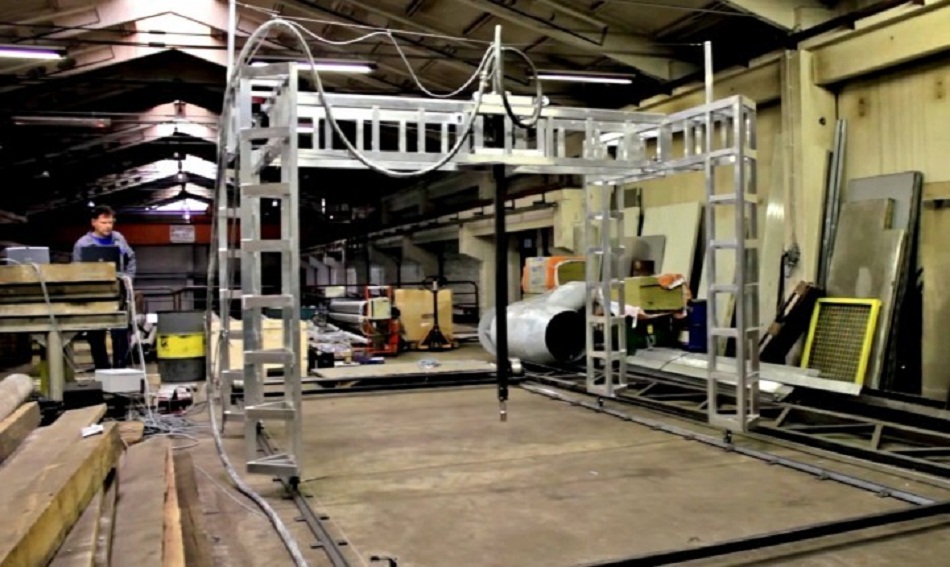
Who invented the 3D printer? What was the first 3D printing technology? And what was the first thing they printed on a 3D printer? Let's open the veil of secrecy over a huge number of interesting facts and stories about the emergence of technology. nine. , which layer-by-layer formed a rigid object from a photopolymer resin with the help of UV illumination.
In fact, he described a modern photopolymer printer, but failed to provide the necessary data for patent registration within a year, as required by patent law, and abandoned the idea. However, in many sources it is he who is called the inventor of 3D printing technology. nine0003
In 1983, three engineers - Alain Le Meho, Olivier de Witt and Jean-Claude André from the French National Center for Scientific Research, in an attempt to create what they called a "fractal object", came up with the idea of using a laser and a monomer, which, under the influence of a laser, turned into a polymer. They applied for a patent 3 weeks before the American Chuck Hal. The first object created on the apparatus was a spiral staircase. Engineers called the technology stereolithography, and the patent was approved only in 1986 year. Thanks to them, the most famous file format for 3D printing is called STL (from the English stereolithography). Unfortunately, the institute did not see any prospects in the invention and its commercialization, and the patent was not used to create the final product.
The first object created on the apparatus was a spiral staircase. Engineers called the technology stereolithography, and the patent was approved only in 1986 year. Thanks to them, the most famous file format for 3D printing is called STL (from the English stereolithography). Unfortunately, the institute did not see any prospects in the invention and its commercialization, and the patent was not used to create the final product.
Laser Stereolithography At the same time, Chuck Hull was working for a company that made countertop and furniture coatings using UV lamps. The production of small plastic parts for prototyping new product designs took up to two months. Chuck came up with the idea to speed up this process by combining UV technology and layering thin plastic. The company gave him a small laboratory for experiments, where he worked in the evenings and weekends. As a material, Chuck used acrylic-based photopolymers that harden under the influence of ultraviolet radiation. One night, after months of experimentation, he was finally able to print a sample and was so elated by luck that he walked home. Chuck showed his invention to his wife. It was an eyewash cup, more like a communion cup, according to the wife. It is considered officially the first 3D printed model in the world and is still kept by the Hull family, and after their death will be transferred to the Smithsonian Research Institute in Washington. nine0003 Hull's Cup
One night, after months of experimentation, he was finally able to print a sample and was so elated by luck that he walked home. Chuck showed his invention to his wife. It was an eyewash cup, more like a communion cup, according to the wife. It is considered officially the first 3D printed model in the world and is still kept by the Hull family, and after their death will be transferred to the Smithsonian Research Institute in Washington. nine0003 Hull's Cup
Chuck Hull filed a patent on August 8, 1984 and was approved on March 11, 1986. The invention was called "Apparatus for creating three-dimensional objects using stereolithography." Chuck founded his own company - 3D Systems, and in 1988 launched the first commercial 3D printer - the SL1 model.
Carl Deckard and Joe Beeman (right), inventors of SLS 3D printing (1987) Another new 3D printing method appeared around the same time as SLA printing. This is selective laser sintering SLS , which uses a laser to turn loose powder (instead of resin) into a solid material. Carl Deckard , a young undergraduate student at the University of Texas at Austin, and his tutor Prof. Dr. Joe Beeman were involved in the development. And the idea belonged to Karl. In 1987, they co-founded Desk Top Manufacturing (DTM) Corp. However, it will take at least another 20 years for SLS 3D printing to become commercially available to the consumer. In 2001, the company was bought out by Chaka Hull, 3D Systems. nine0003 Scott Crump, developer of FDM 3D printing (1988)
Carl Deckard , a young undergraduate student at the University of Texas at Austin, and his tutor Prof. Dr. Joe Beeman were involved in the development. And the idea belonged to Karl. In 1987, they co-founded Desk Top Manufacturing (DTM) Corp. However, it will take at least another 20 years for SLS 3D printing to become commercially available to the consumer. In 2001, the company was bought out by Chaka Hull, 3D Systems. nine0003 Scott Crump, developer of FDM 3D printing (1988)
Surprisingly simpler and cheaper 3D printing is FDM (Fused Deposition Modeling) was created after SLA and SLS, in 1988. Its author was aeronautical engineer Scott Crump . Crump was looking for an easy way to make a toy frog for his daughter and used a hot glue gun to melt the plastic and pour it into layers. Thus, the idea of FDM 3D printing was born, a technology for layer-by-layer deposition of a plastic thread. Crump patented a new idea and co-founded Stratasys with his wife Lisa Crump at 1989 year. In 1992, they launched their first production product, the Stratasys 3D Modeler, on the market.
In 1992, they launched their first production product, the Stratasys 3D Modeler, on the market.
Milestone 2: 3D printing becomes available
The first machines built by 3D Systems and Stratasys were bulky and expensive. The cost of one was hundreds of thousands of dollars, and only the largest companies in the automotive and aerospace industries could use them. Printers had a lot of limitations and could not be widely used. The development of technology has been very slow. 20 years later, in 2005, the RepRap (Replicating Rapid Prototyper) project appeared - a self-replicating mechanism for rapid prototyping. nine0003
It was inspired by Dr. Adrian Bauer from the University of Bath in the UK. The aim of the project was to "self-copy", replicate the components of the 3D printers themselves. In the photo, all the plastic parts of the "child" are printed on the "parent". But in fact, a group of enthusiasts led by Adrian were finally able to create the budget 3D printer for home or office use.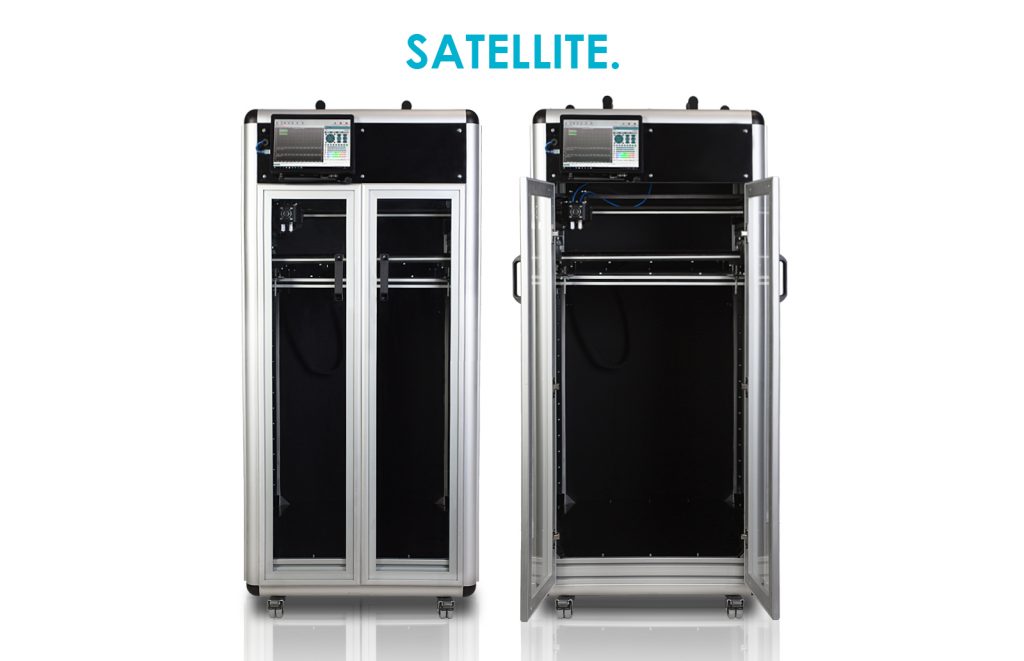
The idea was quickly taken up by three New York technologists and started a desktop FDM printer company, MakerBot. This was the second turning point in the modern history of 3D printing. nine0003
Other technologies were being developed in parallel. One of them is bioprinting. Thomas Boland of Clemson University has patented the use of inkjet printing to 3D print living cells, making it possible to print human organs in the future. Dozens of companies around the world conduct research in this area.
Another important use of the new technology was the creation of prostheses, first conventional, and then bionic. In 2008, the first printed prosthesis was successfully transplanted into a patient and allowed him to return to a normal lifestyle. nine0003
Another milestone has been the emergence of open source print files on the Internet. Websites www.thingiverse.com, www.myminifactory.com and many others contain both free and paid files for 3D printing. Users share models online and print them themselves.
Stage 3: 3D printing today
In recent years, 3D printing has become available to the mass consumer: the price of printers has dropped significantly, and their use has become more convenient. Photopolymer 3D printers print detailed models with high precision and resolution. The number of users is growing, including due to the huge community of enthusiasts who are ready to help beginners. This is facilitated by the availability of ready-made files for 3D printing and the availability of software for creating models. nine0003
3D printing is already becoming a standard solution in industries such as dentistry, jewelry, orthopedics, and in other industries the implementation is in full swing. The possibilities are endless - from building houses to neurosurgery, from chocolate printing to metal printing.
Alexander Kornveits ,
Expert in the field of additive technologies, founder and CEO of the Tsvetnoy Mir company
history of creation and development, who invented and invented when it appeared
Printers for printing three-dimensional models appeared in industrial enterprises, in educational organizations, became available for home use, ceasing to be exclusive equipment.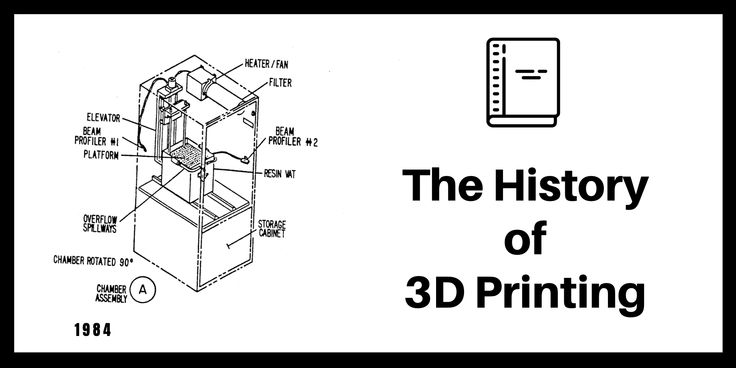 When and by whom was the 3D printer invented, what 3D printing technologies exist and where are they applied, what is the future of 3D equipment?
When and by whom was the 3D printer invented, what 3D printing technologies exist and where are they applied, what is the future of 3D equipment?
The first 3D printer: the history of creation
Engineers and inventors from different countries took part in the development of 3D technologies. Chuck Hull, an American developer, is considered a pioneer in the world of 3D printing. "Installation for stereolithography" he began to create at 1984, and a couple of years later received a patent for it. This made it possible to transfer the project to a commercial footing: in 1988, mass production of 3D printers began.
Interesting! Hull became the first, because he managed to patent his invention. But even before him, the Japanese Hideo Kodama came up with the technology of photopolymer curing of models and tried to get a patent in May 1980, later - in 1984 - the French Olivier de Witte, Alain Le Meho and Jean-Claude Andre filed an application for their invention of a stereolithography apparatus.
But for one reason or another, neither the first nor the second could patent their own developments. nine0087
The printing technology is as follows: a liquid light-sensitive substance - a photopolymer - is laid out in a thin layer and immediately cured under the influence of UV rays, turning into plastic and acquiring a given shape.
In the same year 1988 that Hull's 3D printers hit the market, another American, Steven Scott Crump, proposed a new way of 3D printing - deposition modeling. And the third technique, which was laser sintering of a photopolymer, but not a solution, but a powder, was introduced by Carl Deckard, an engineer from the University of Texas. nine0003
All three machines for printing 3D objects became the prototypes of modern printers designed to create three-dimensional models. The first units were not distinguished by high quality and accuracy of printed products, but this was only the first step in breakthrough 3D printing technology.
Help. The term "3D printing" appeared only in 1995, and the name "3D printer" was given to the invented units in 1996.
Evolution in 3D printing
Algorithms for creating a three-dimensional object have been gradually improved. New materials and methods of their processing appeared, printing accuracy increased and the quality of finished products improved. Each of the methods for making 3D models has its own advantages and disadvantages. Different areas of production are suitable for their own technology, and even the earliest of all remains relevant decades after its first announcement. nine0003
LOM
LOM (laminated object manufacturing) was invented in 1985 by Mikhailo Feigen. A three-dimensional figure is formed from thin layers of plastic, paper, fabric, and composite materials. The films are cut along the contour with a laser, then the material is heated and joined in layers under pressure.
Important! The cost of materials for LOM printing is low, this makes it possible to minimize the cost of products.
But the price of printers is an order of magnitude higher than, for example, FDM devices, so this technique is not in demand for personal use. nine0003
SLS
The abbreviation SLS stands for selective laser sintering. The process is as follows:
- powder or granules are scattered in a thin uniform layer;
- the laser beam sinters the filament in the areas specified by the digital model;
- the next layer is poured and leveled, and the cycle is repeated until a complete object is obtained.
Important ! It is allowed to print several models at the same time in one chamber of the printer. nine0003
The filament is polymer powder, ceramic granules, nylon and metal powder.
SGC
SGC (solid ground curing) is a layer-by-layer compaction technique implemented by Cubital engineers (Israel). The printing procedure consists in projecting a template onto a photopolymer layer.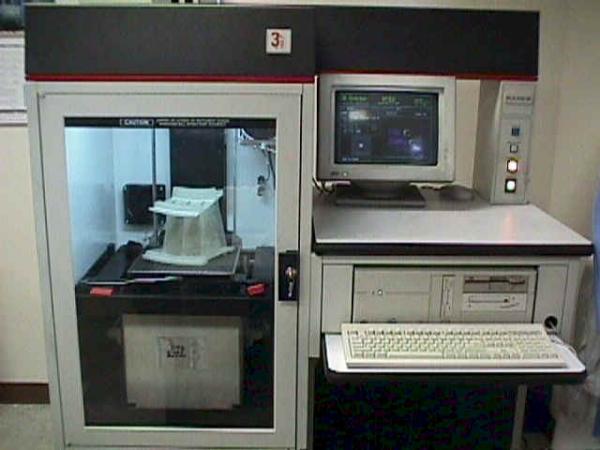 The area illuminated by ultraviolet rays hardens, the cavities are filled with wax, and the formation of the next layer begins. Actions are repeated many times, and a three-dimensional detail appears. At the end of the process, the wax melts. nine0003
The area illuminated by ultraviolet rays hardens, the cavities are filled with wax, and the formation of the next layer begins. Actions are repeated many times, and a three-dimensional detail appears. At the end of the process, the wax melts. nine0003
Important! The cost of equipment is very high, and expensive toxic polymers are applicable as a filament.
The technology received a second name - mask stereolithography.
FDM
Fused deposition modeling can literally be translated as “layer-by-layer fusion”. Most modern 3D printers use this particular technology of printing with thermoplastic materials. The filament is fed into the extruder, melted and extruded with a thin thread onto the platform, where a three-dimensional model grows layer by layer. nine0003
Reference:
- FDM technology prints parts of any complexity;
- the range of thermoplastics allows you to choose the right color and properties for printing;
- formed objects can be processed - grind, paint, finish on CNC machines and manually.
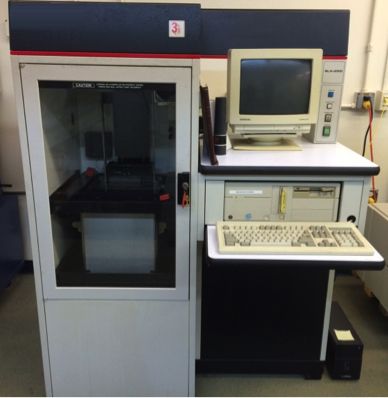
Affordable cost of printers and filament led to their use for home use. nine0003
RepRap
The Replicating Rapid Prototyper - RepRap for short - launched in 2006. His goal is to create a printer capable of reproducing itself. The first copy of the self-replicating apparatus was presented in 2008. He printed about half of his own structural units and mechanisms.
Diagrams, drawings and explanatory documentation are available for download on the Internet. Thanks to RepRap printers and free access to instructions, anyone can set up small-scale production to create 3D models with minimal investment in the purchase of equipment. All costs are in the purchase of plastic. nine0003
The first food printer
The idea to print food was brought to life by scientists at the Massachusetts Institute of Technology. Amit Zoran and Marcello Coelho of Fluid Interfaces Group released a 3D printer that recreates food in 2010. The device was called Cornucopia (from the English. "Cornucopia"). The printing device independently creates mixtures, cools to a predetermined temperature and creates a finished product, which is a dish with the necessary taste, smell and texture and has the required nutritional value. nine0003
"Cornucopia"). The printing device independently creates mixtures, cools to a predetermined temperature and creates a finished product, which is a dish with the necessary taste, smell and texture and has the required nutritional value. nine0003
3D printer in medicine
The seemingly utopian idea to fill the printing device with living cells instead of ink has come true - a bioprinter has been invented. Released from the walls of the American University of Wake Forest, the equipment is designed to recreate human organs from stem cells.
What a bioprinter can print:
- blood vessels;
- leather;
- tissue pieces;
- cartilage;
- whole organs - kidneys, bladder, heart.
Interesting . The bioprinter is used to speed up wound healing. The device, after scanning the damage, prints the tissues filling the wound directly on the patient's body.
The future of 3D printing
3D printing is the technology of the future.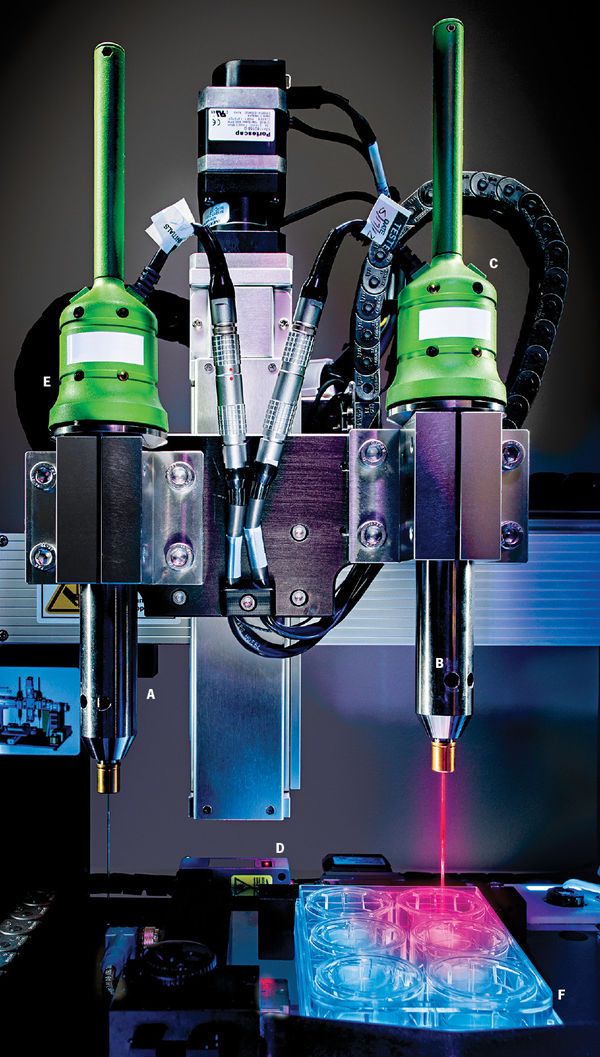 Being a real multifunctional and at the same time compact factory, the 3D printer will be used in many areas: construction, medicine, automotive, electronics, food industry, pharmaceuticals. nine0003
Being a real multifunctional and at the same time compact factory, the 3D printer will be used in many areas: construction, medicine, automotive, electronics, food industry, pharmaceuticals. nine0003
- Construction . The printed house is no longer considered a miracle. In China, Dubai and European countries, there are already architectural objects printed by huge 3D construction printers using mortar as a filament.
- Medicine . The main direction of introduction of printing devices is obtaining organs for transplantation. The formation of blood vessels, skin integuments is successfully practiced in the environment of scientific medical institutions.
- Automotive . 3D printing technology is already being used to produce parts. There are prototypes completely created on the printer.
- Food industry . In addition to creating culinary masterpieces, printing devices will be used to produce dishes with desired properties - dietary, with precisely calculated nutritional value.
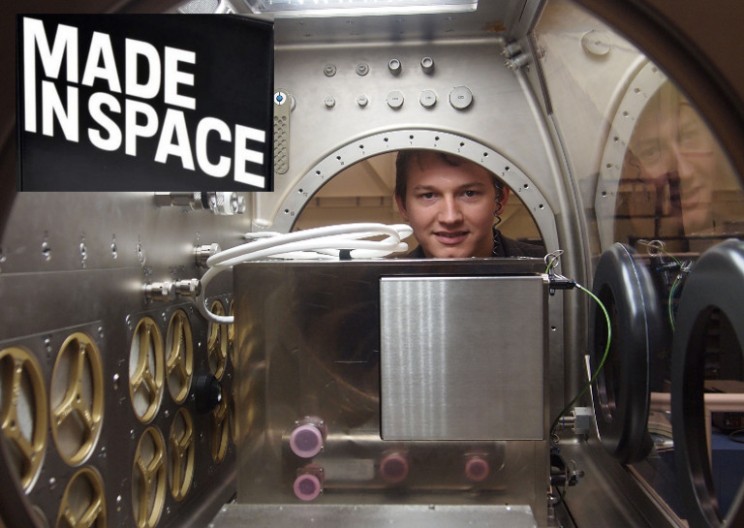
Learn more




